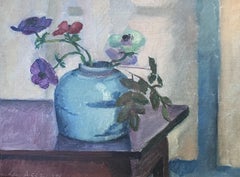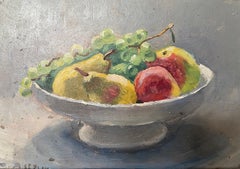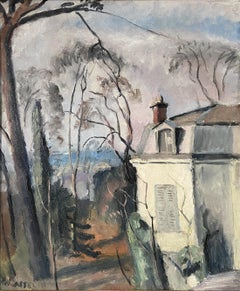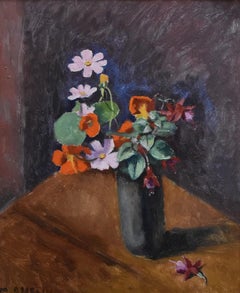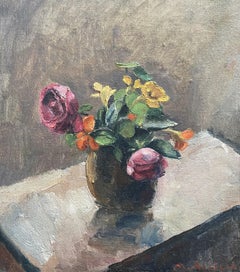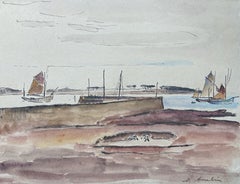Emile Vaillant
1930s Post-Impressionist Figurative Paintings
Oil
1930s Post-Impressionist Figurative Paintings
Oil
1930s Post-Impressionist Figurative Paintings
Oil
1930s Post-Impressionist Figurative Paintings
Oil
1930s Post-Impressionist Figurative Paintings
Oil
1930s Post-Impressionist Figurative Paintings
Oil
1920s Post-Impressionist Landscape Drawings and Watercolors
Watercolor
1930s Modern Still-life Paintings
Oil
Maurice Asselin for sale on 1stDibs
Maurice Asselin is a painter and engraver, a member of the École de Paris. For the famous art historian, Bernard Dorival, Asselin was with André Dunoyer de Segonzac, Charles Dufresne, Paul-Elie Gernez and Henry de Waroquier, among the painters of the "realistic reaction" which to "idealism and photographic realism" of the academic tradition of the 19th century," prefer the frank realism of the Impressionists and the sincerity with which they questioned the nature. Against the unrealism of cubists, they pose as heirs of the independent masters of the third quarter of the 19th century. And Dorival strongly supports his statement by quoting our artist, "If you like painting, you will not only ask it to be a decoration for the walls of your home but first of all to be food for your life interior," thus professes Asselin who continues, "no brain combination, no theory can give birth to a work of art... Art springs from the marveled love of life."
A Close Look at Post-impressionist Art
In the revolutionary wake of Impressionism, artists like Vincent van Gogh, Georges Seurat, Paul Cézanne and Paul Gauguin advanced the style further while firmly rejecting its limitations. Although the artists now associated with Postimpressionist art did not work as part of a group, they collectively employed an approach to expressing moments in time that was even more abstract than that of the Impressionists, and they shared an interest in moving away from naturalistic depictions to more subjective uses of vivid colors and light in their paintings.
The eighth and final Impressionist exhibition was held in Paris in 1886, and Postimpressionism — also spelled Post-Impressionism — is usually dated between then and 1905. The term “Postimpressionism” was coined by British curator and art critic Roger Fry in 1910 at the “Manet and the Postimpressionists” exhibition in London that connected their practices to the pioneering modernist art of Édouard Manet. Many Postimpressionist artists — most of whom lived in France — utilized thickly applied, vibrant pigments that emphasized the brushstrokes on the canvas.
The Postimpressionist movement’s iconic works of art include van Gogh’s The Starry Night (1889) and Seurat’s A Sunday on La Grande Jatte (1884). Seurat’s approach reflected the experimental spirit of Postimpressionism, as he used Pointillist dots of color that were mixed by the eye of the viewer rather than the hand of the artist. Van Gogh, meanwhile, often based his paintings on observation, yet instilled them with an emotional and personal perspective in which colors and forms did not mirror reality. Alongside Mary Cassatt, Cézanne, Henri Matisse and Gauguin, the Dutch painter was a pupil of Camille Pissarro, the groundbreaking Impressionist artist who boldly organized the first independent painting exhibitions in late-19th-century Paris.
The boundary-expanding work of the Postimpressionist painters, which focused on real-life subject matter and featured a prioritization of geometric forms, would inspire the Nabis, German Expressionism, Cubism and other modern art movements to continue to explore abstraction and challenge expectations for art.
Find a collection of original Postimpressionist paintings, mixed media, prints and other art on 1stDibs.

